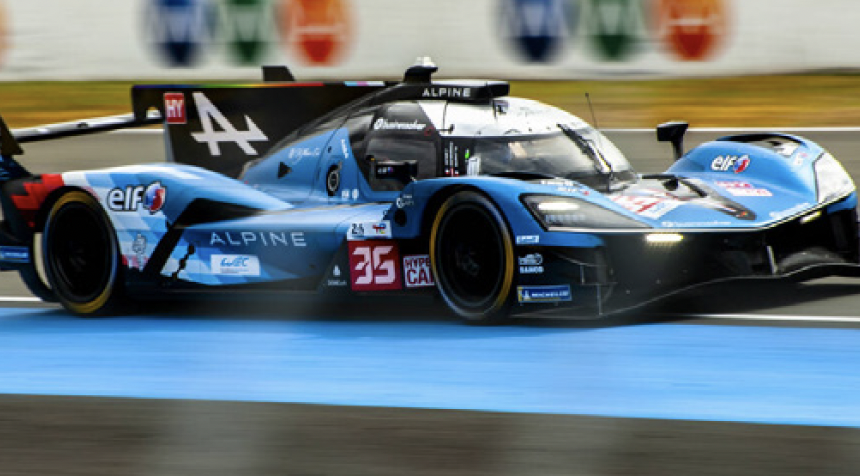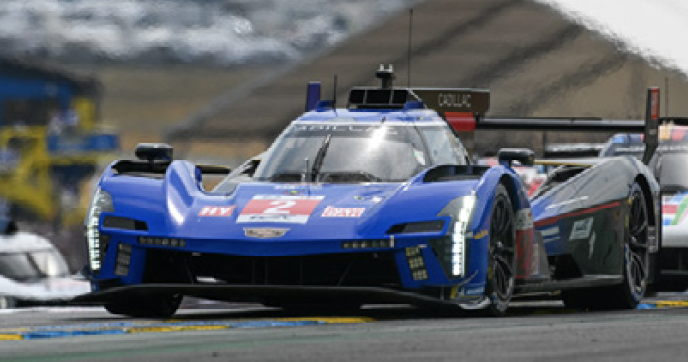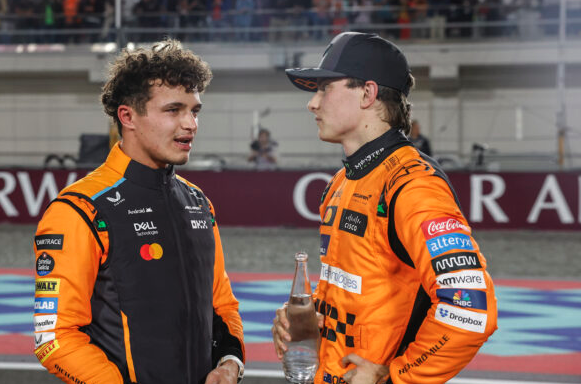You would have had to be living under a rock in recent times to not know that Aston Martin is on a bit of a renaissance this decade. The brand, synonymous with the world’s most famous spy, had long faded from its 1960s heyday. For kids of the 1990s, Aston Martin was best known for its brutish yet somewhat outdated GT cars, the DB7, the Vanquish, and the DBS.
Fast forward to today, and the transformation is striking: a refreshed model lineup, an SUV, a dedicated track car, its own Formula 1 team, arguably the best F1 campus in the business, and perhaps one of the greatest engineers to have ever graced motorsport—Adrian Newey. Under the watchful eye of business mogul Lawrence Stroll, Aston Martin seems unstoppable. But is that momentum enough?

Their bid for an outright Le Mans victory, their first since 1959, is backed by works team Heart of Racing. Partnering with Aston Martin Performance Technologies, they will bring two Valkyrie AMR-LMH Hypercars to the 2025 Le Mans. Such is their commitment that Heart of Racing, based in Seattle, has established a UK headquarters solely for their WEC program.
Building an Aston Martin Hypercar
But this isn’t just a customer team in disguise; these cars are being developed in close cooperation with Aston Martin Performance Technologies—the same group behind the F1 team. They have overseen the design and development of the AMR-LMH, ensuring it carries the full weight of Aston Martin’s technical expertise.
Aston Martin claims that performance is their driving force and that motorsport is the ultimate expression of their pursuit of excellence. With rhetoric like that, there is nowhere to hide. But unlike other manufacturers merely looking to expand their brand’s reach through racing, Aston Martin’s motorsport heritage can be traced back 96 years. No other road-going hypercar manufacturer can say the same.
The AMR-LMH uses a modified version of the 6.5-liter Cosworth V12 from the road-going Valkyrie. The production car boasts cutting-edge aerodynamics, a carbon fiber chassis, and a bespoke suspension system. it wouldn’t be the first time a car designed for the road, might just turn up at Le Mans and take the plaudits by surprise. Gordon Murray’s iconic McLaren F1 car, the fastest car in the world back in 1994, took to the legendary 24h race in 1995 and won at its first attempt.
If that wasn’t inspiration enough, the Valkyrie has a special lineage of its own. It was originally conceived by Aston Martin and Red Bull Racing in the 2010s, back when Aston’s presence in F1 was little more than a sponsor’s sticker on the Red Bull cars. Yet, behind the scenes, the two were developing a track-focused machine that remained fully road-legal.
The Alonso and Newey effect
One of the brains behind the project was none other than Adrian Newey, who, frustrated with the restrictive F1 regulations at the time, used it as an outlet for his creativity. If that sounds familiar, it’s because it echoes Gordon Murray’s story from three decades earlier. And now, with Newey officially onboard with Aston Martin as a Technical Partner, wouldn’t it be poetic if this became his defining moment?
If that weren’t enough, Fernando Alonso, a two-time Le Mans winner, is not only driving for the F1 team but is committed to the Aston Martin brand beyond his racing career. A close confidant of Lawrence Stroll, he will undoubtedly have his say on what it takes to win the endurance racing’s biggest prize.
Make no mistake, modern-day Le Mans demands far more than just a fast car and showing up. Aston Martin will have to be at its absolute best, ready to take the fight to Ferrari, which is chasing its third consecutive victory, as well as the largest and most competitive Hypercar field in history. But Ferrari proved that you can turn up and win in year one. And if a car designed by Adrian Newey (whom Ferrari once courted), which has been developed by a team working in the best F1 facility in the world can’t get the job done, then perhaps nothing will.
The stars seem to have aligned. Now, all that’s left to do is to wait, watch, and see if they deliver. There won’t be a British fan, trackside or back home, wanting anything else.
What is it about Le Mans that’s getting F1 teams so excited?
Aston Martin might have a historical tie to Le Mans, but nostalgia alone isn’t what’s driving teams to take a fresh look at the endurance classic. A growing number of Formula 1 teams are showing interest in the event like never before.



Ferrari returned in 2023 and has since secured back-to-back victories. Alpine and F1’s newest works team, Cadillac (joining in 2026), arrived in 2024, alongside United Autosports, whose chairman is none other than McLaren team boss F1 marketing supremo Zak Brown – who, incidentally, also brought a pair of McLaren GT cars. Sure enough, it was announced recently that McLaren will indeed be joining the WEC grid in 2027, adding yet another F1 giant to Mercedes, entering the GT class this year is another example. This means that, with Aston Martin in the Hypercar class, more than half of the F1 fraternity is now represented at Le Mans.

When you consider Audi, which enters F1 next year, as well as Porsche—who came close to joining F1 with Red Bull Racing—and Toyota, which recently partnered with Haas, you see an even stronger link between the two series.
What is driving the F1 teams to WEC?
These manufacturers have dominated Le Mans over the last 20 years, creating greater synergy between endurance racing and Formula 1 than ever before. And with momentum still building, the question arises: what’s driving this growing connection?
Formula 1’s cost cap and teams’ desire to retain top engineering talent are certainly contributing factors, particularly in recent years. But so is the increasing competitiveness of endurance racing. The series’ growing relevance to the wider automotive industry also plays a role, yet perhaps the biggest factor is the sheer technical challenge that Le Mans presents.
Gone are the days when simply making it to the finish after 24 gruelling hours was considered an achievement. Now, just as in F1, reliability is so strong that survival alone isn’t enough—you need to be sharp, competitive, and strategically astute right up to the final minutes of racing. After 1,380+ minutes on track, can you still execute perfectly under pressure? In F1, you need to deliver for two hours on a Sunday. But at Le Mans, you need to do it for 24 hours, from Saturday through Sunday, and still come out on top.
That’s what draws teams and drivers alike. And that’s what makes Le Mans the greatest race on the planet.
🎟️ Le Mans tickets and packages are still on sale – book now!
